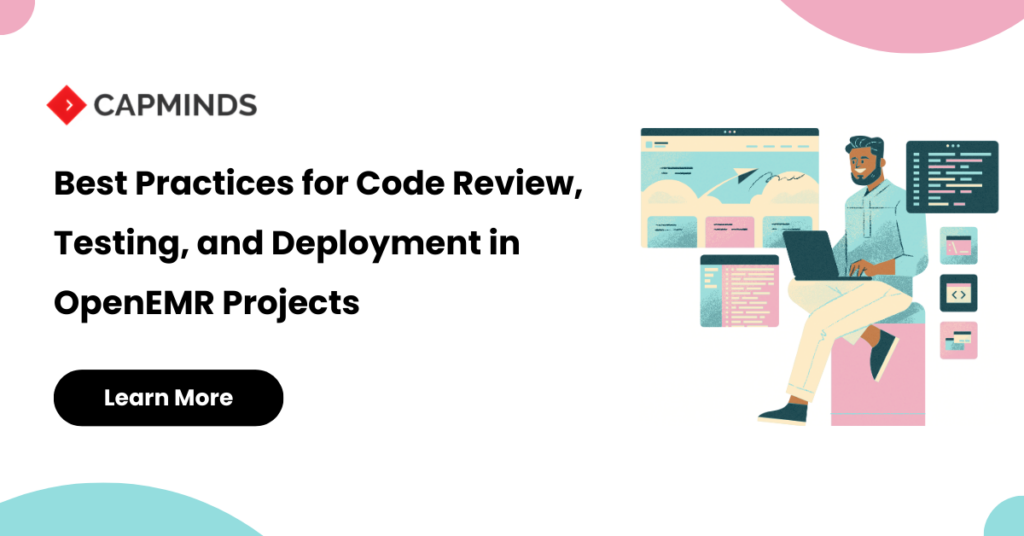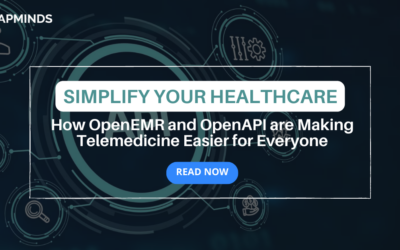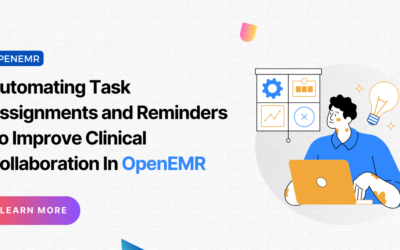Best Practices for Code Review, Testing, and Deployment in OpenEMR Projects
OpenEMR is a powerful open-source electronic medical record (EMR) and practice management system, but like any complex software application, it requires a robust development workflow to ensure code quality, reliability, and maintainability. Let’s explore best practices for code review, testing, and deployment in OpenEMR projects.
Code Review
Code review is a crucial step in the development process, as it helps catch bugs, improve code quality, and ensure adherence to coding standards and best practices. Here are some best practices for code review in OpenEMR projects:
1. Use a Version Control System (VCS): OpenEMR is hosted on GitHub, which provides an excellent platform for version control, collaboration, and code review. Use Git and GitHub to manage your codebase, create branches for new features or bug fixes, and submit pull requests for code review.
2. Follow Coding Standards: OpenEMR has established coding standards and guidelines that all contributors should follow. These standards cover aspects such as naming conventions, code formatting, and commenting. Adhering to these standards ensures consistency and readability across the codebase.
3. Conduct Peer Reviews: Peer review is an essential part of the code review process. Assign at least one or two experienced developers to review each pull request. Encourage constructive feedback and discussions around code quality, design decisions, and potential improvements.
4. Use Code Review Tools: Leverage code review tools like GitHub’s built-in review system or third-party tools like Codacy or CodeClimate. These tools can automatically check for code style issues, potential bugs, and code quality metrics, making the review process more efficient.
5. Test Before Merging: Before merging a pull request, ensure that the code changes pass all automated tests and manual testing scenarios. This helps catch any regressions or issues introduced by the new code.
Testing
Comprehensive testing is crucial for ensuring the reliability and stability of OpenEMR installations. Here are some best practices for testing in OpenEMR projects:
1. Unit Testing: OpenEMR includes a unit testing framework based on PHPUnit. Write unit tests for individual components, functions, and classes to validate their behavior and catch potential bugs early in the development cycle.
php
// Example unit test for the Facility class
class FacilityTest extends \PHPUnit\Framework\TestCase
{
public function testGetFacilityName()
{
$facility = new Facility(1, 'Test Facility');
$this->assertEquals('Test Facility', $facility->getName());
}
}
2. Integration Testing: Integration tests verify the correct interaction between different components or modules within OpenEMR. These tests help catch issues that may arise from the integration of multiple components working together.
3. End-to-End (E2E) Testing: E2E tests simulate real-world user scenarios and ensure that the entire application flow works as expected. Tools like Selenium or Cypress can be used to automate E2E testing in OpenEMR.
4. Regression Testing: Whenever new features are added or existing code is modified, it’s essential to run regression tests to ensure that existing functionality remains intact. Maintain a comprehensive test suite and run it regularly to catch regressions early.
5. Test Automation: Automate as much of the testing process as possible using tools like Jenkins, Travis CI, or GitHub Actions. This ensures that tests are run consistently and reliably with every code change, reducing the risk of introducing bugs.
Deployment
Deploying code changes to production environments requires careful planning and execution to minimize downtime and ensure a smooth transition. Here are some best practices for deploying OpenEMR:
1. Use a Staging Environment: Before deploying to production, set up a staging environment that mimics the production setup as closely as possible. Deploy code changes to the staging environment first and conduct thorough testing to catch any issues before pushing to production.
2. Implement a Deployment Pipeline: Establish a deployment pipeline that automates the process of building, testing, and deploying OpenEMR to different environments. Tools like Jenkins, GitLab CI/CD, or GitHub Actions can help streamline this process.
3. Database Migrations: OpenEMR relies heavily on a database backend. When deploying code changes that modify the database schema, ensure that database migrations are handled properly to maintain data integrity and consistency.
php
/ Example database migration for adding a new column
class AddEmailColumnToPatients extends AbstractMigration
{
public function up(Schema $schema)
{
$this->addSql('ALTER TABLE patients ADD email VARCHAR(255) DEFAULT NULL');
}
public function down(Schema $schema)
{
$this->addSql('ALTER TABLE patients DROP email');
}
}
4. Automated Deployment Scripts: Create deployment scripts or tools that automate the deployment process, including tasks like pulling the latest code, running database migrations, clearing caches, and restarting services. This ensures a consistent and repeatable deployment process.
5. Rollback Strategy: Have a rollback plan in place in case something goes wrong during deployment. This could involve reverting to a previous stable version of the codebase or restoring a database backup.
6. Monitoring and Logging: Implement robust monitoring and logging mechanisms to track the deployment process and application performance after deployment. This helps diagnose and troubleshoot any issues that may arise.
By following these best practices for code review, testing, and deployment, you can ensure a smoother development workflow, better code quality, and more reliable OpenEMR installations. Remember, collaboration, automation, and continuous improvement are key to maintaining a robust and efficient development process.
Struggling to implement best practices in your OpenEMR projects?
Let our team of experts help! CapMinds offers consulting, development, and training services tailored to your needs. Reach out to us today for a free consultation and take your OpenEMR deployment to the next level. 📩




